Inside the elite, detail-obsessed world of the people who judge the Oscars of classic cars
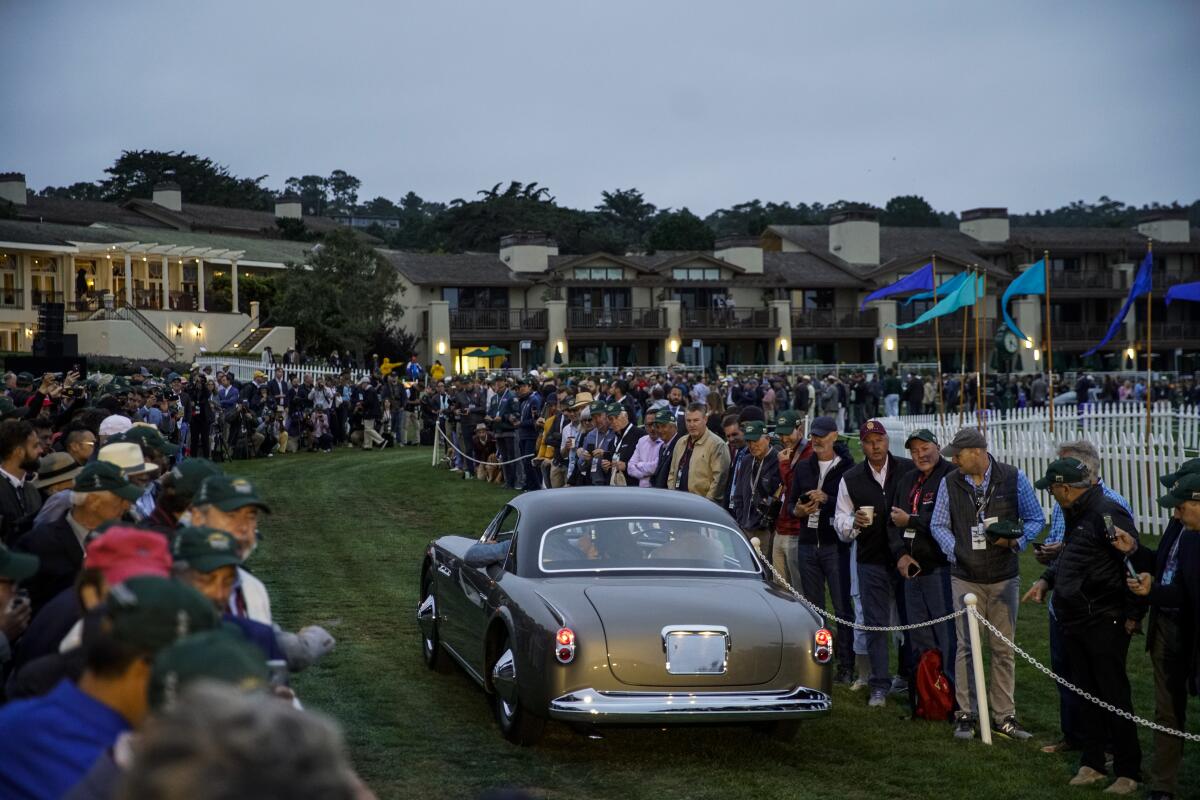
- Share via
It was 7 on a Sunday morning in late August, and already you could feel the tension building. This was the Pebble Beach Concours d’Elegance, arguably the most important judged vintage car show in the world, where vehicles already worth seven or eight figures can exponentially increase in value by winning the best of show award at day’s end. And just being invited to compete, let alone winning one of the 28 class awards or 18 special awards, can add to a car’s value and cachet.
The highly guarded judges room was filled with the 153 men and four women who would decide the fate of every entrant. Concours Chairman Sandra Button, who has held the post for 17 years and worked for the Concours for 35, welcomed the group, and then Chief Judge Chris Bock made a few remarks, ending with a reminder that they had to be back no later than 11:45 to turn in results.
I was there at the invitation of Button to witness and write about the intricacies of this year’s judging for the Los Angeles Times and for this new biweekly car column debuting in the Saturday section of the paper this weekend. (Full disclosure: I was invited last year to be an honorary judge by the ArtCenter College of Design, which bestows a design excellence award to one car. So I could both sympathize with and scrutinize the choices this year’s judges made.)
For this first column, it seemed appropriate to start at the pinnacle of sheet metal, the Concours d’Elegance. Each August, a smorgasbord of high-level car-centric events occurs on the Monterey Peninsula. This year, those included 12 vintage-car auctions; four days of historic racing at Laguna Seca; Legends of the Autobahn; Concorso Italiano; the Japanese Automotive Invitational; a hypercar show called Exotics on Broadway; concept and production-car unveilings; and private homes turned into luxuriously branded party hubs for the likes of Rolls-Royce, Bentley, Genesis and Lamborghini.
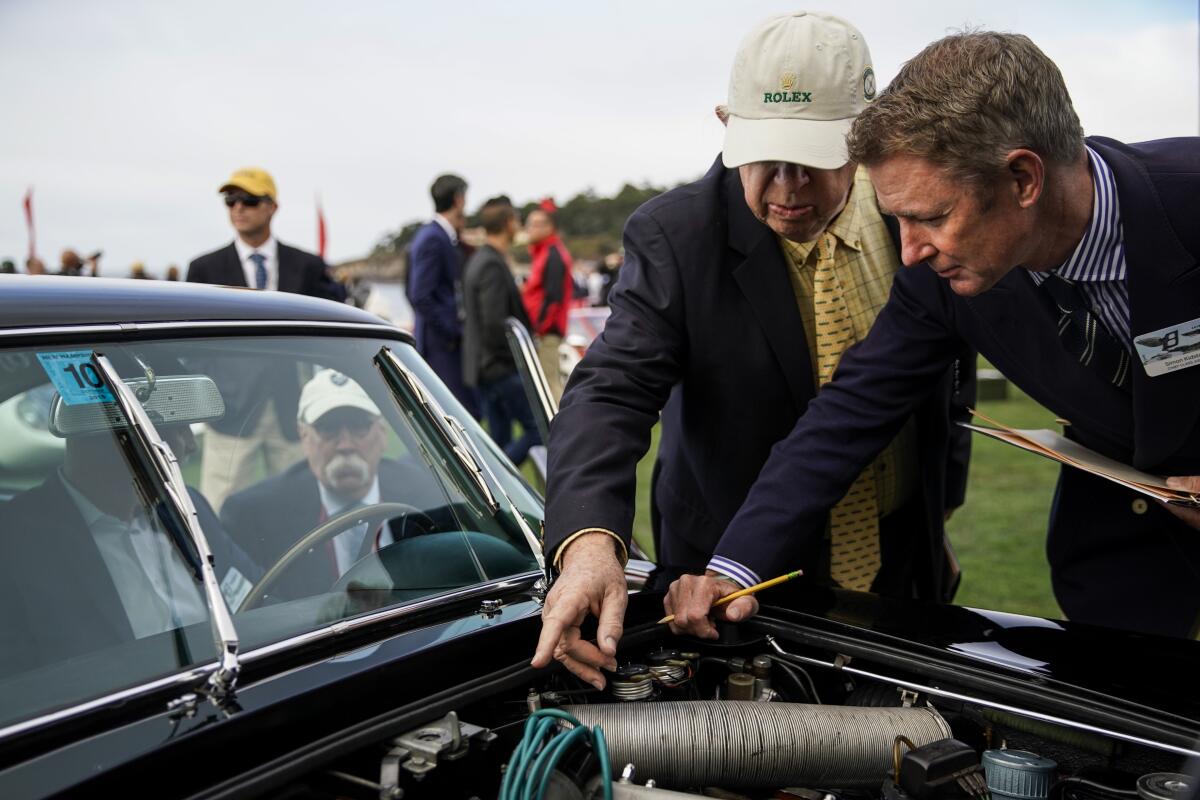
The grand finale of Monterey Car Week, the Pebble Beach Concours, happens Sunday at the Lodge at Pebble Beach, when the 17th and 18th holes of one of the most storied public golf meccas are for one sweet day devoid of irons and wedges and instead dotted with more than 200 of the most important, valuable and unique cars from around the world. The sold-out event attracts roughly 20,000 attendees annually, each paying $450 (general admission ) to $3,000-plus for one of the luxury VIP packages for the privilege of seeing up close some of the world’s most stunning classic cars. (This year, the event raised more than $2 million for local charities.)
Whether you’re a vintage car fanatic or not, the importance of being invited to show a car at Pebble is akin to winning an Oscar, or if you like, the Super Bowl, meaning it’s the culmination, usually, of years of work researching a car’s original details and restoring it as close to its original glory as possible. Collectors can spend into the double-digit millions on a vehicle, and then hundreds of thousands more on restoration.
After the remarks from Button and Bock, the entire judging pack, most sporting the traditional uniform of navy blazer and khakis, descended onto the lawn, clipboards in hand. I was shadowing Chief Class Judge Matt Stone’s postwar sports and postwar touring classes (eight cars in each). Stone is a longtime judge, award-winning journalist and author, and all-around upstanding guy. Stone shared his judging tenets with me: “First, we judge cars, not owners. Second, judges must have fun. And third, every car gets a fair shake.”
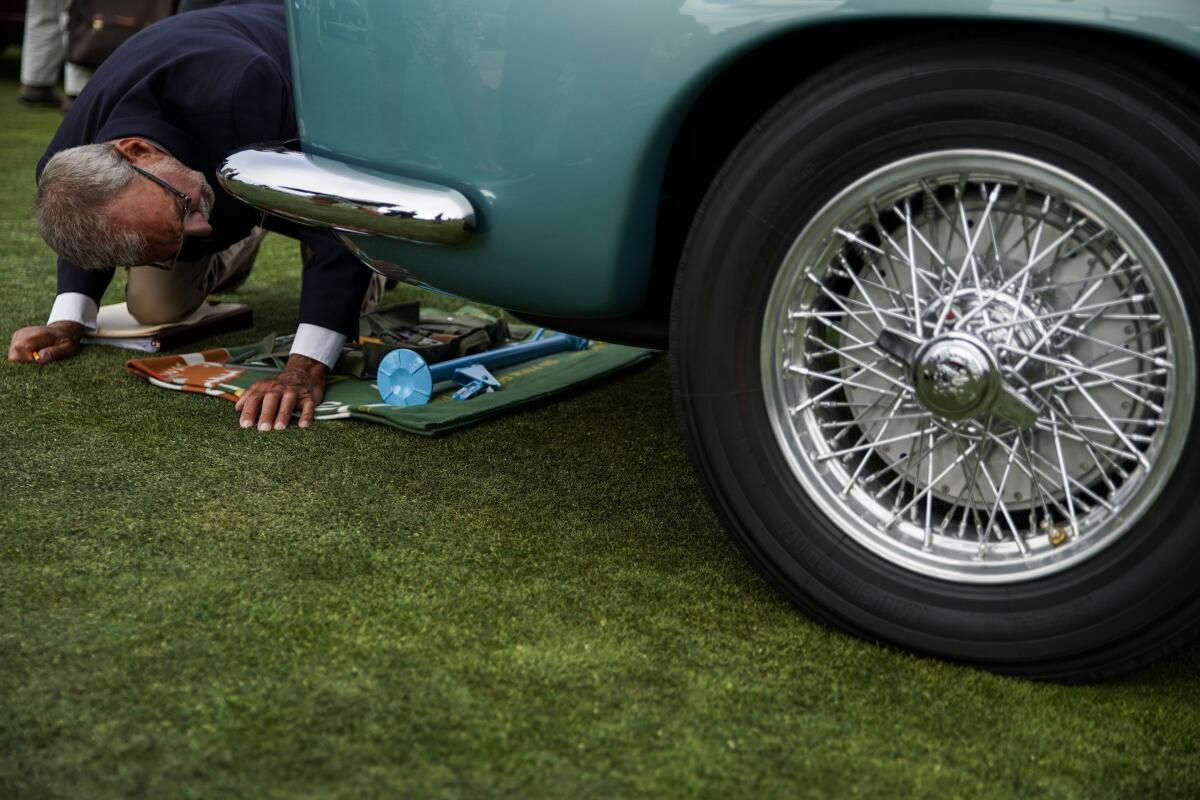
The other class I was shadowing comprised only Lamborghini Miuras (five examples), overseen by Winston Goodfellow, an award-winning author, fine-art photographer, longtime chief class judge and former selection committee member. He is, among other talents, a leading expert on both famous and obscure postwar Italian sports cars; good luck stumping him on any detail.
Who are the other judges? They are restorers and archivists, engine experts and authorities on such rare-air topics as Zagato coachwork and Bentley prewar (as in WWII) racing cars.
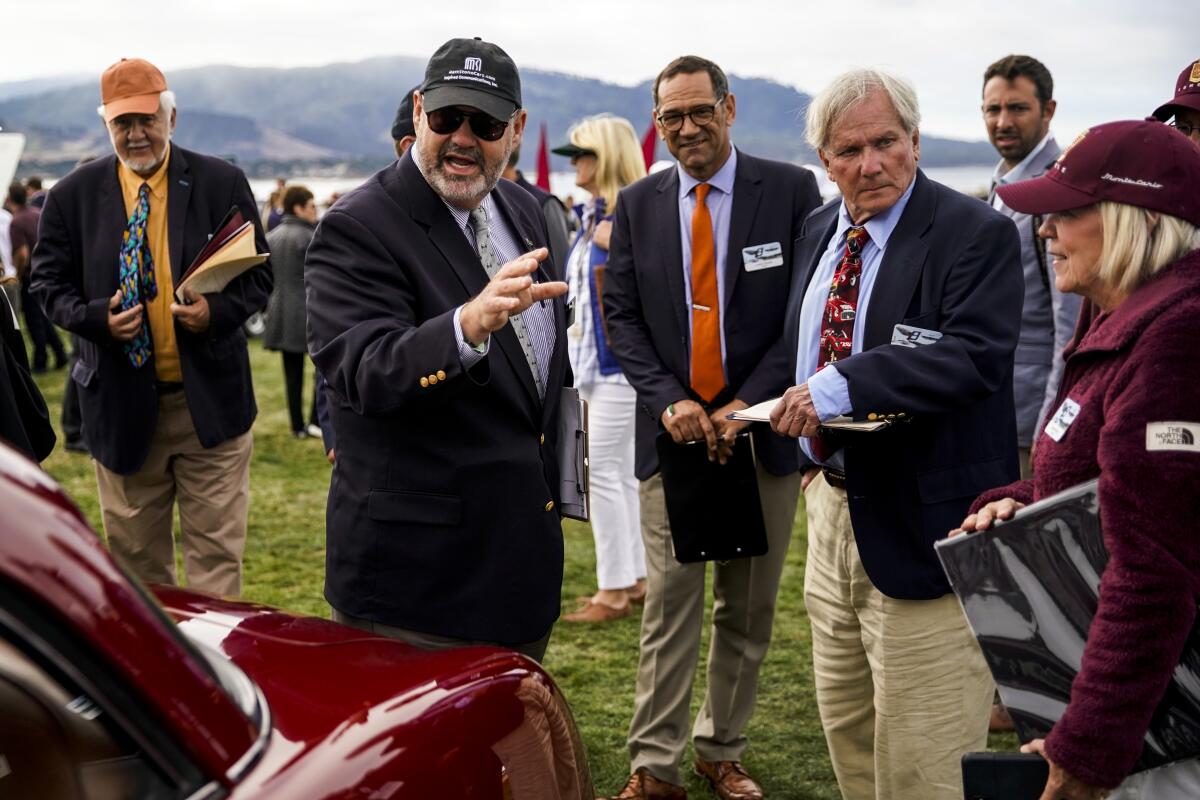
Here’s how it works: The Concours accepts applications from car owners in January; technically anyone can apply, yet very few are accepted. The 16-member selection committee sorts through them and reaches out to known owners to invite specific cars into the year’s class lineup; in the spring, they notify the lucky chosen. Judges then spend the months leading up to the show meticulously researching each car.
Judges have at most 15 minutes per car to go through a 20-item checklist, which includes engine operation, fuel system check and body-panel fit. It is almost eerie how knowledgeable they are; one judge spotted washers in a Miura engine compartment that were too shiny.
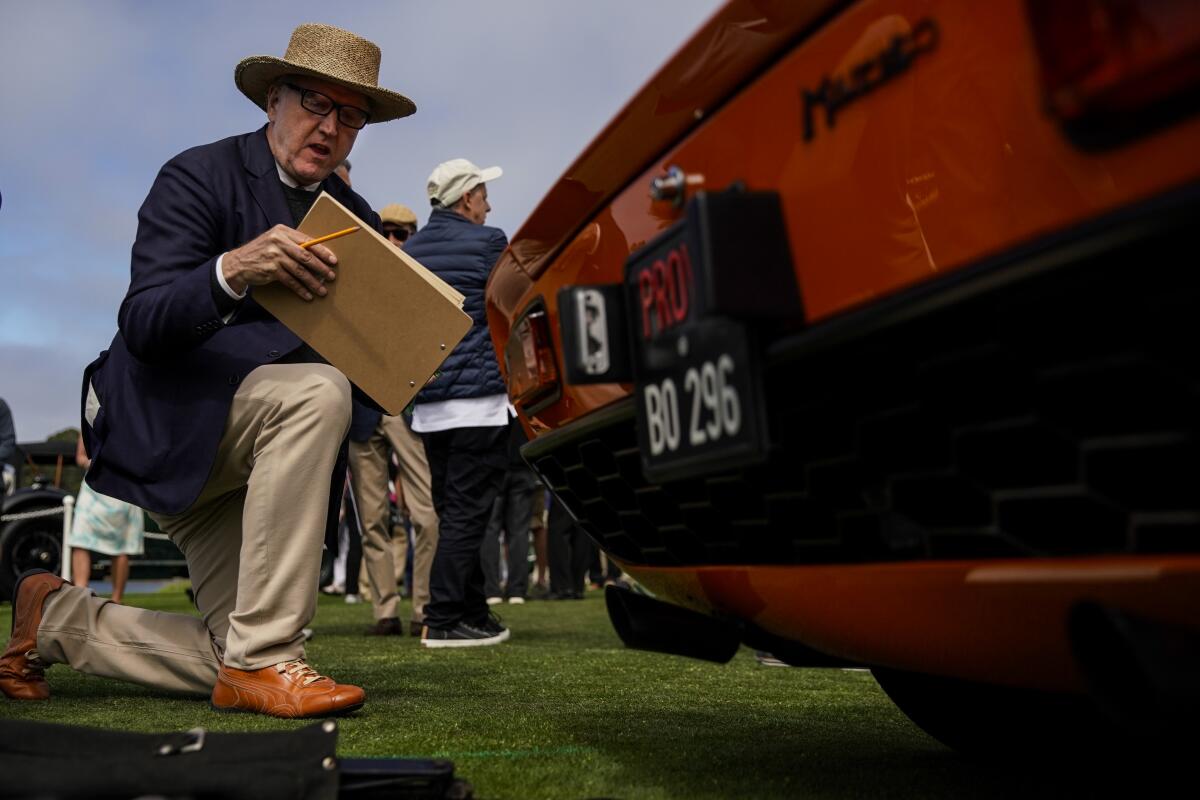
It is not uncommon for an owner to be a billionaire and/or captain of industry, but for those brief minutes as their “baby” gets scrutinized by the experts, that very same guy looks more like a kid outside the principal’s office awaiting sentencing. Stone and Goodfellow repeatedly swoop in to dissipate the stress, greeting each owner. “We can’t thank you enough for making the effort to be here today; without you, this would just be a golf course,” Stone told one exhibitor. “Just by making it here you have already won.”
Pebble judges are tasked with assessing two key things: originality and elegance. For the former, there is a clear 100-point system; each car starts at 100 but may get docked for having a non-period-correct paint color, say, or worse, for being over-restored, meaning looking better today than the day it left the factory.
Measuring elegance is a far more qualitative matter. Does the car grab your attention? Stand out above and beyond its classmates? Give you goose bumps? I watched extraordinarily experienced men struggle over such decisions as though they were in a war room and about to put troops into battle.
I found myself battling my own issues: The car that gave me goose bumps in the postwar touring class was a proud 1957 Chrysler 300B Boano Coupe Speciale. But there was a stunning and historically rich 1950 Alfa Romeo 6C 2500 that also grabbed my heart. It was impressive to listen to the judges find ways to compare apples to oranges — how an Italian-bodied Chrysler measures up to an Alfa and an Aston Martin and a French Ford Comète (yes, there was such a thing) and so on.
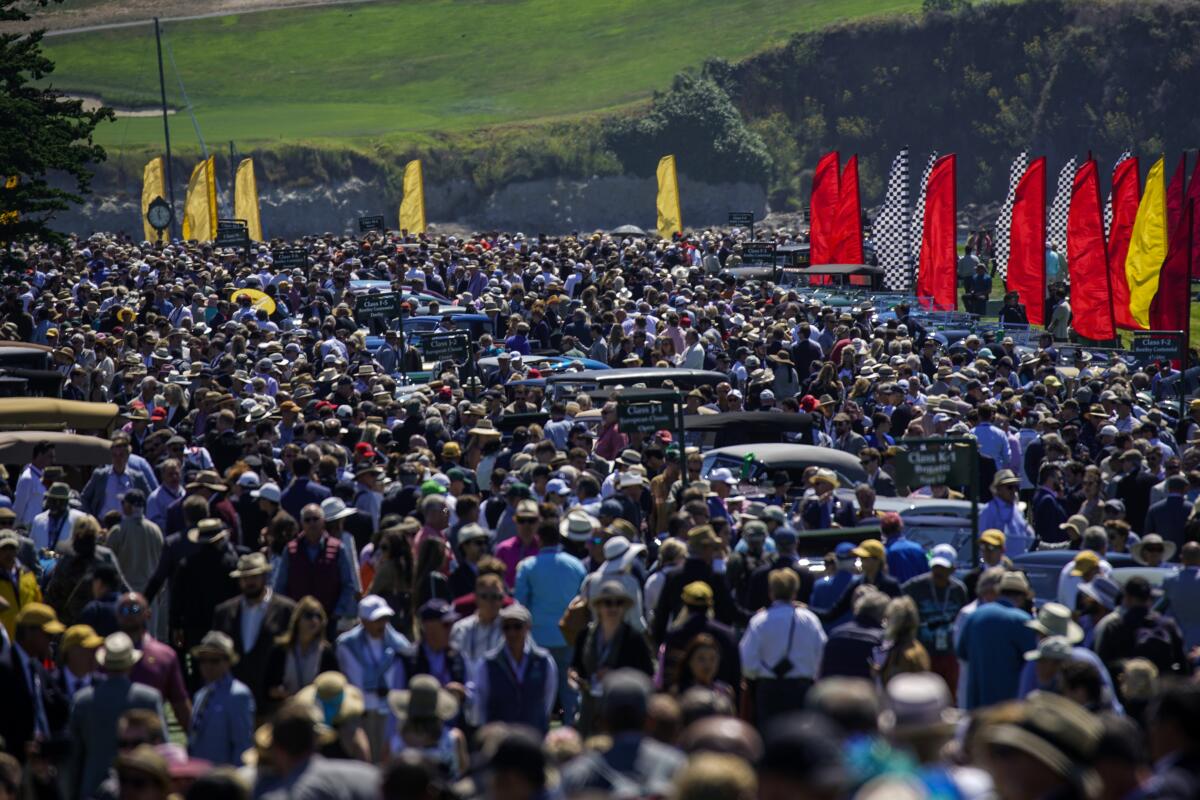
Equally mind-bending was the intricate work the Lamborghini Miura judges had to do to distinguish various versions of the same model — all restored to perfection. One rip-roaring debate was whether the wiper blade arms on one of the cars would have left the factory black or chrome. Another: Should the exhaust tips be round or oval?
Sound trivial? Not when you’ve spent, on average, $150,000 to $1.3 million restoring your car to Pebble level, according to L.A. -based restorer Rex Nguyen, who has worked on many award winners. The judging process draws a line in the sand of sensibility: Incorrect wiper blade arms are bad, grass in the tire tread is fine. In fact, in the event of a tie, the car that has been actively driven takes the award.
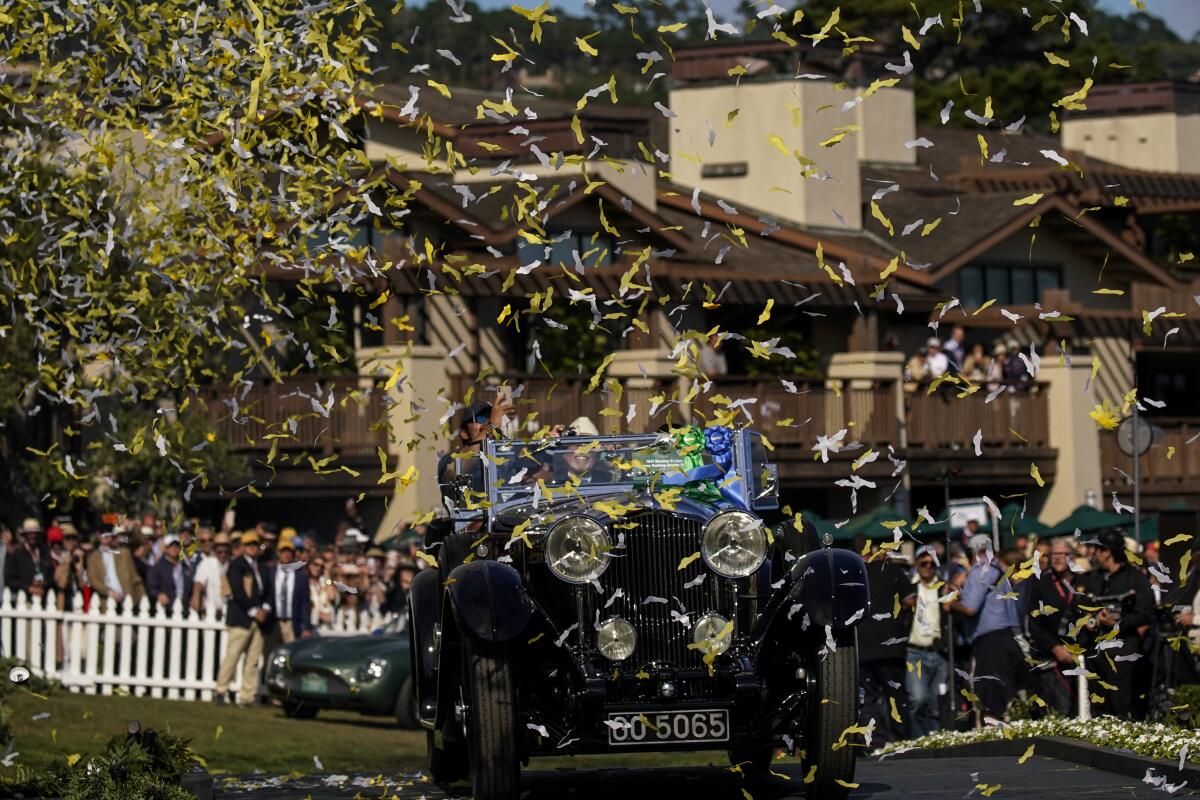
While spectators milled about in their Sunday best, sipping champagne and posting selfies to Instagram, inside the judging room, the air crackled with the electricity of adrenaline as final decisions were made. Stressful? Yes — but clearly every judge was enjoying a particularly heady bucket-list moment.
Once all ballots were handed over to Bock, the group filed out to take their seats at the awards show. The program, emceed by Derek Hill, son of American racing legend and longtime SoCal resident Phil Hill, announced each class winner, which was driven onto the ramp to accept its award. From there, they parked nearby in the winners circle for the final round.
To choose best of show, the chief class judges, several selected senior judges, the honorary judge team leaders, Honorary Chief Judge Glenn Mounger, Bock and Button each filled out a secret ballot. There were four contenders: a 1931 Bentley 8-Litre Gurney Nutting Sports tourer, a 1962 Aston Martin DB4GT Zagato, a 1936 Mercedes-Benz 540K Erdmann & Rossi special cabriolet and a 1938 Talbot-Lago T150C-SS Figoni & Falaschi teardrop cabriolet.
After the votes were counted, Button returned to the ramp and handed the envelope to Derek Hill, who announced the 2019 winner: the Bentley, exhibited by Sir Michael Kadoorie, the head of the company that owns the Peninsula Hotel group and a longtime, ardent car collector. It was his first Pebble best of show, an honor that most likely increased the already heady value of his car, which he bought through a private sale in 2010.
Seconds later, fireworks, confetti and mayhem overtook the stage. The cries of support were especially loud from where I was standing, in the Bentley hospitality suite just behind the ramp. And shout they should, since Bentley was not only the featured marque for 2019 but also was celebrating its 100th anniversary. “At least a dozen cars had a serious shot at winning our top award,” said Button. “But the 8-Litre Bentley is a magnificent machine, more than worthy of such a high honor.”
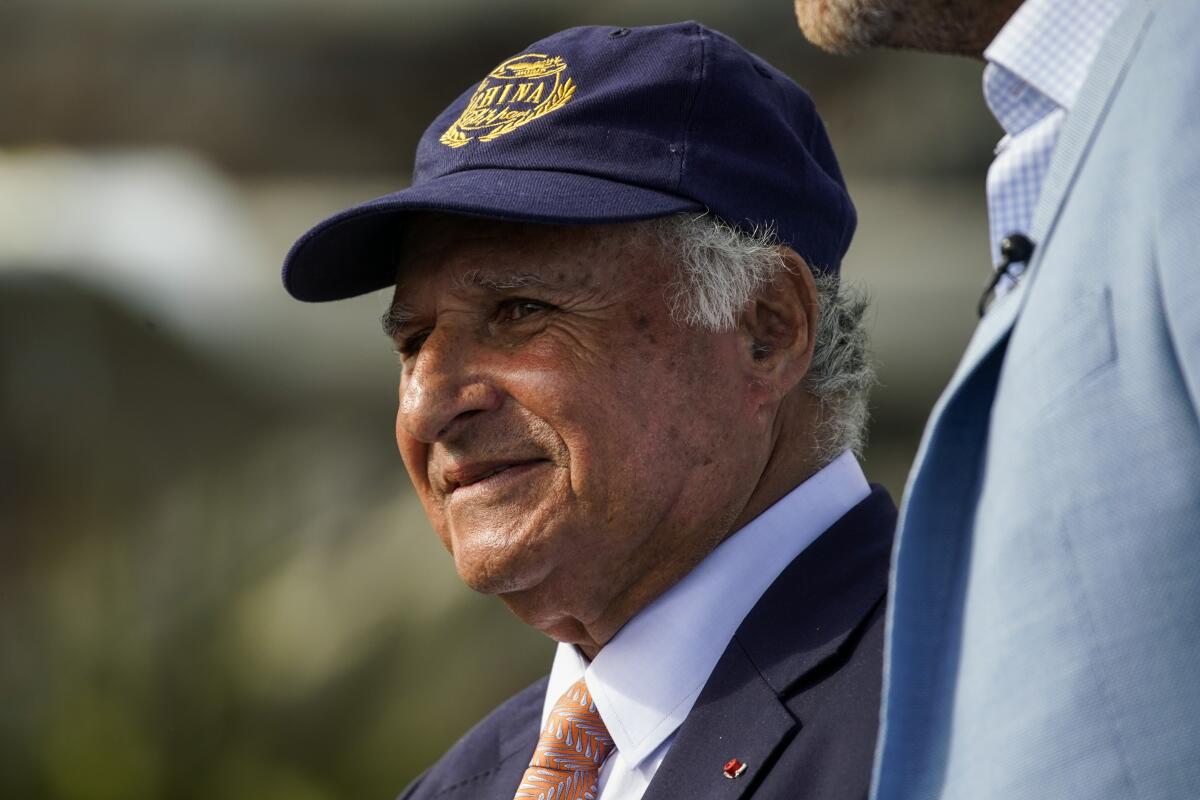
And suddenly, it was all over. The collective millions of dollars spent to acquire and restore the cars, all the time, research and sweat — all slipped into past tense.
But the cars there that day were no longer what they were when they drove onto the grass early that morning. They had earned a Pebble pedigree. And that pedigree does indeed carry intrinsic value. No expert is willing to put a number or percentage on it, but they all agree that the halo effect of a Pebble win, like an Oscar, lasts forever.
More to Read
Sign up for The Wild
We’ll help you find the best places to hike, bike and run, as well as the perfect silent spots for meditation and yoga.
You may occasionally receive promotional content from the Los Angeles Times.










